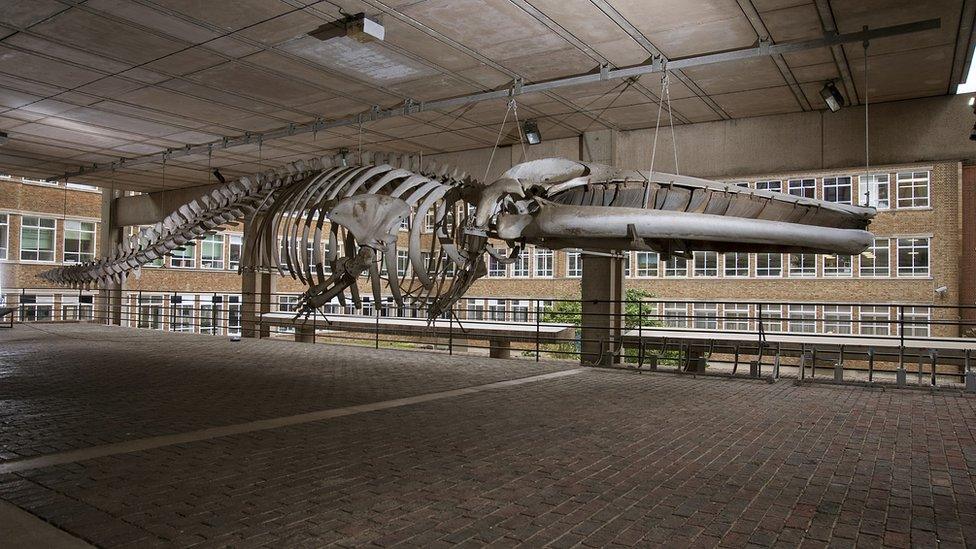Whale skeleton rebuilt at Cambridge University museum
- Published
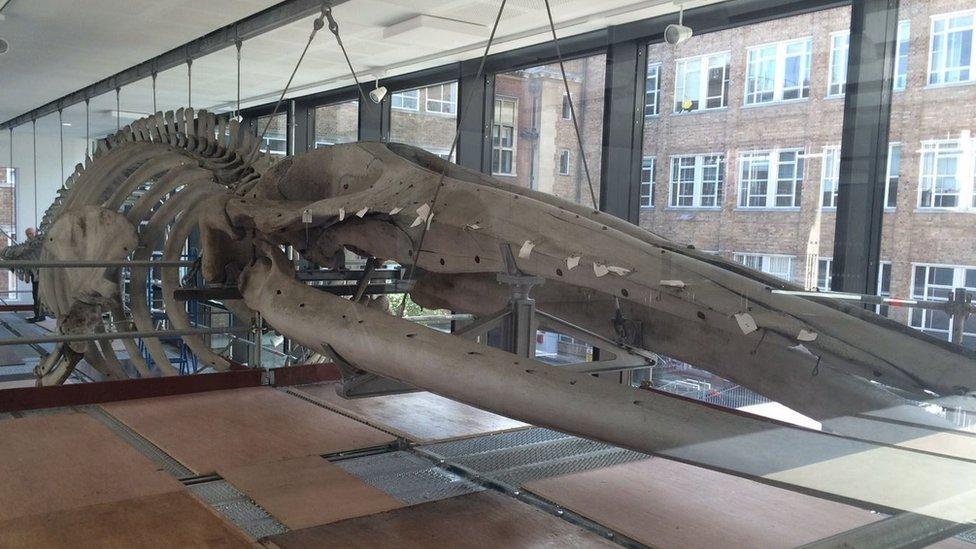
The whale has been re-hung in a specially-built Whale Hall at the museum
A giant whale skeleton dismantled and put into storage for three years during a museum refurbishment has been put back together, bone by bone.
The 70ft (21m) finback arrived at Cambridge University's Zoology department 150 years ago, after washing up dead on a Sussex beach.
It was taken down from display when the Museum of Zoology closed in 2013 for a £4m makeover.
Re-assembling and re-hanging the whale took two people about four weeks.
The finback (Balaeonoptera physalus) - the second largest species after the blue whale - is thought to have weighed about 80 tonnes, the equivalent of eight double-decker buses, when it was alive.
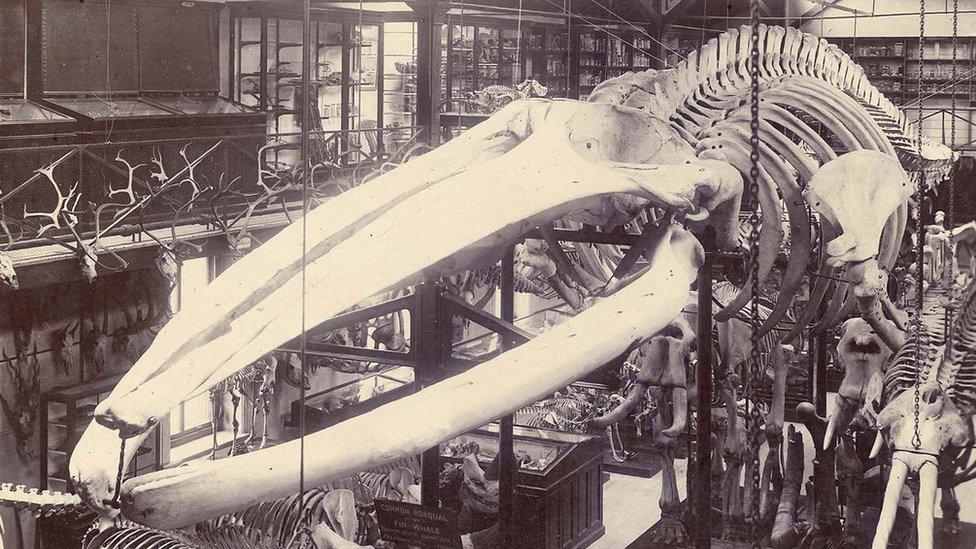
The finback whale skeleton arrived at Cambridge University's Zoology Museum in 1866.
More on this story and other news from Cambridgeshire
It washed up in Pevensey Bay on 14 November, 1865, after a storm.
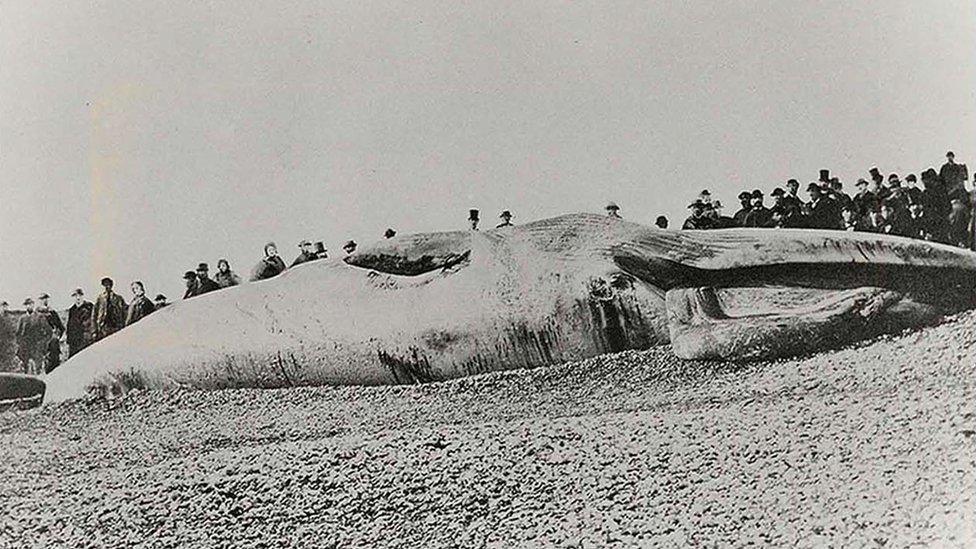
Thousands of people made a special journey to see the whale when it washed up on the beach
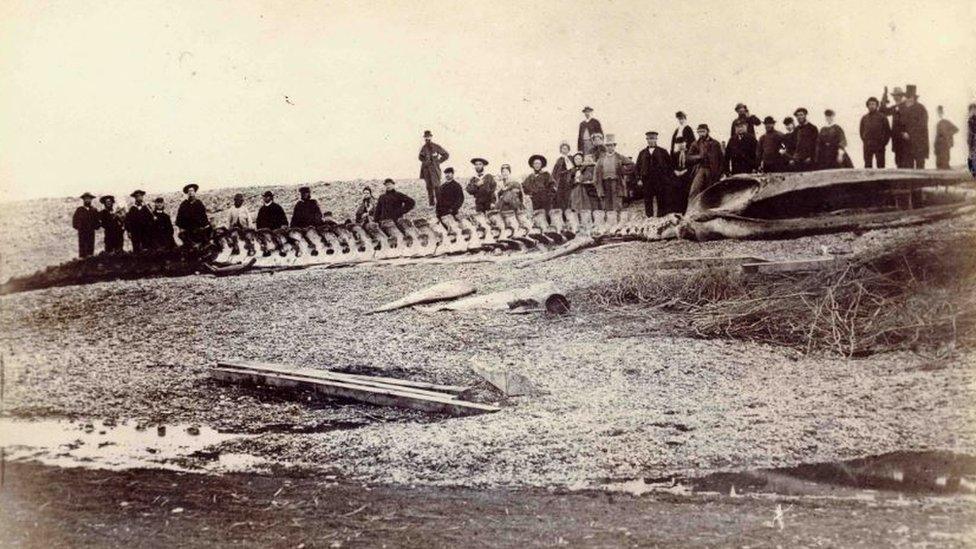
The Pevensey Bay whale was still drawing crowds when it was a skeleton
The mammal was sold at auction for £38 to 10 local fisherman who cut it up under the guidance of William Henry Flower, conservator of the Museum of the Royal College of Surgeons.
Mr Flower told Cambridge University about the "magnificent skeleton", and the department bought it, finally putting it on public display 30 years later.
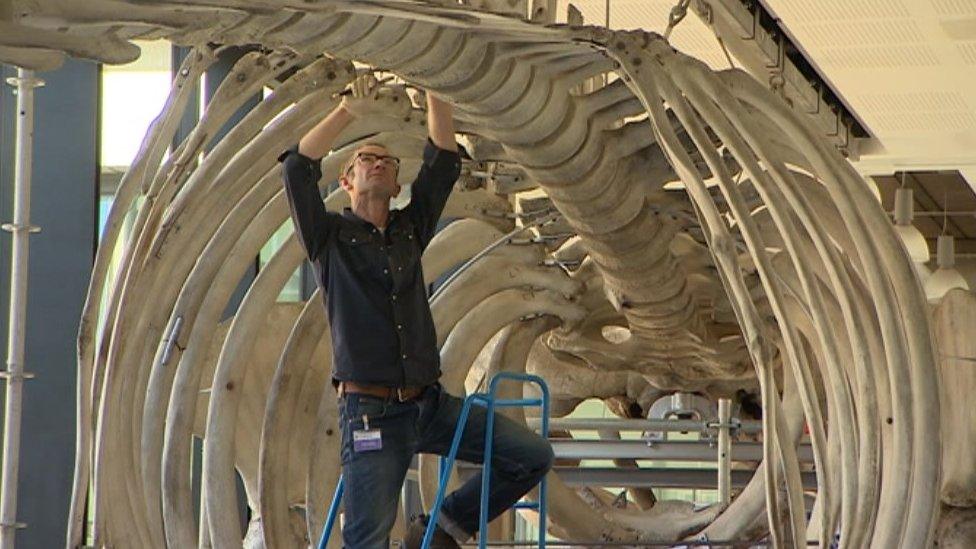
Putting the massive mammal back together took "a lot of labour", the museum said.
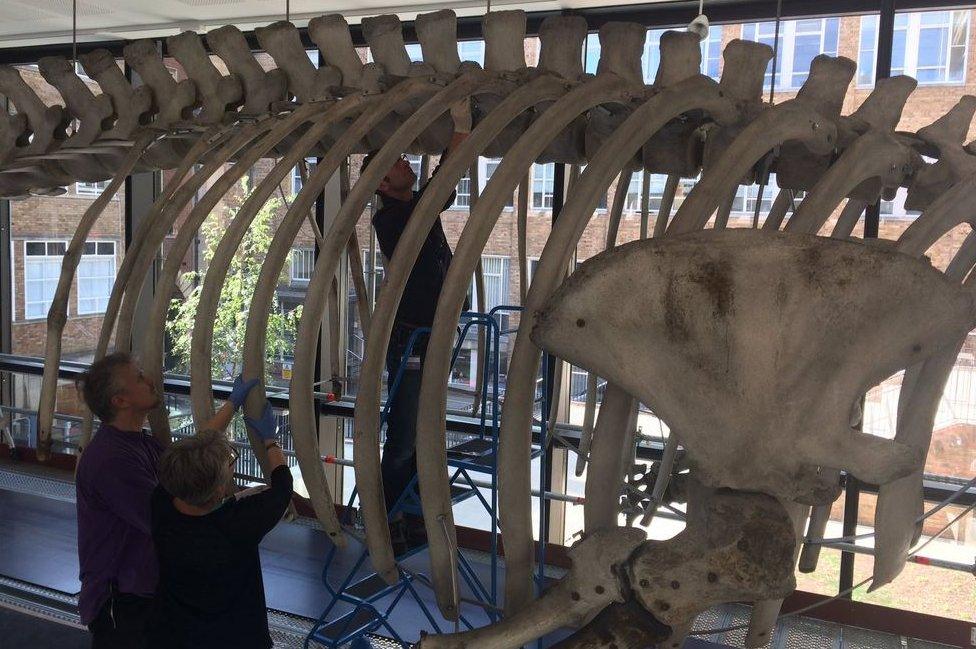
The whale's last rib was put in place earlier
For years it took centre-stage, dwarfing the museum's four million other specimens, including the skeleton of a Dodo and many animals collected by naturalist Charles Darwin.
However, it was consigned to storage boxes for three years until being put back together and re-hung in a new glass display area.
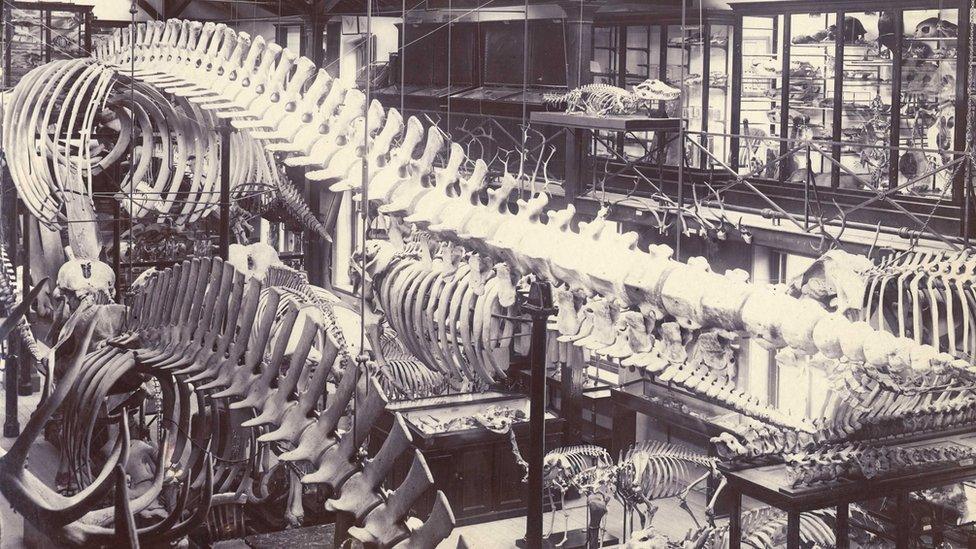
The whale had been on display at Cambridge University's Zoology Museum since 1896
Putting it back together took "a lot of patience, a lot of effort and a lot of labour", collections manager Matt Lowe said.
"It's really iconic, it's 150 years old - exactly the same age as the museum itself," he added.
Whale-watchers will be able to appreciate the whale's sheer scale when the museum reopens to the public next summer.
- Published13 November 2015
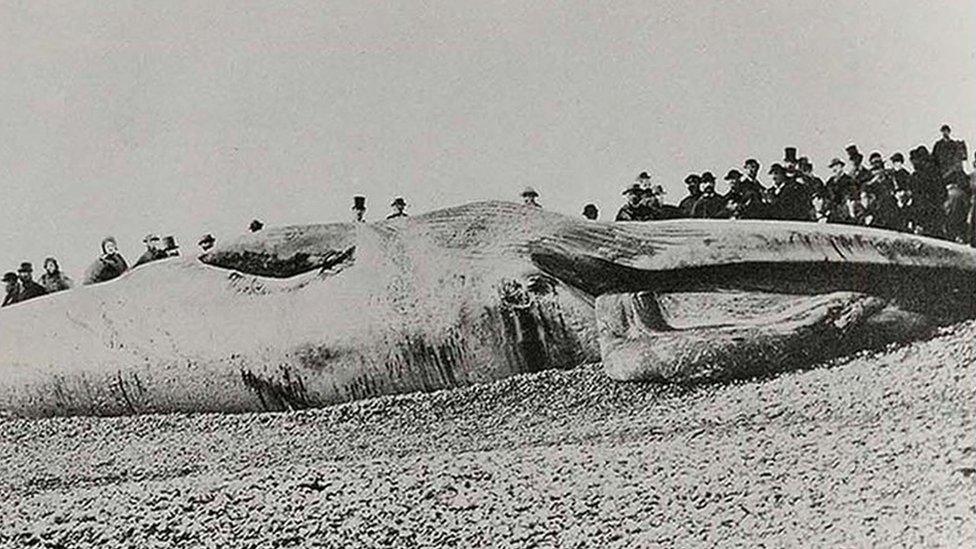
- Published13 November 2015

- Published23 September 2013
